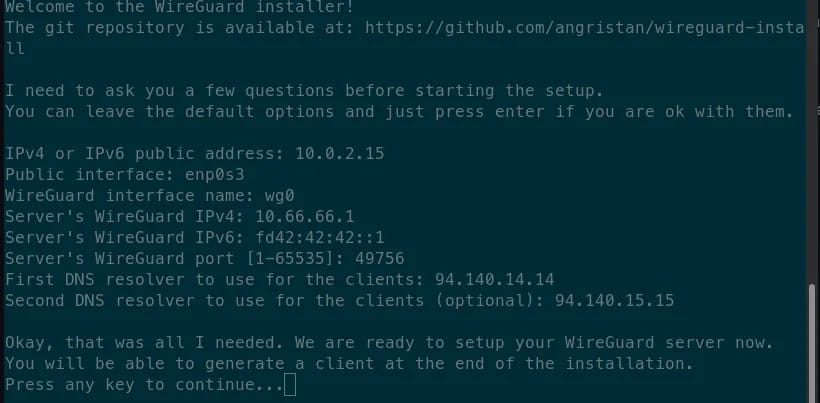
In this tutorial, we will show you how to install Wireguard on Debian 11. For those of you who didn’t know, Wireguard is one of the well-known and great open-source VPN solutions. Wireguard aims for better performance and more power than IPsec and OpenVPN. Wireguard protocol passes traffic over UDP.
This article assumes you have at least basic knowledge of Linux, know how to use the shell, and most importantly, you host your site on your own VPS. The installation is quite simple and assumes you are running in the root account, if not you may need to add ‘sudo‘ to the commands to get root privileges. I will show you through the step-by-step installation of the Wireguard VPN server on a Debian 11 (Bullseye).
Prerequisites
- A server running one of the following operating systems: Debian 11 (Bullseye)
- It’s recommended that you use a fresh OS install to prevent any potential issues
- A
non-root sudo useror access to theroot user. We recommend acting as anon-root sudo user, however, as you can harm your system if you’re not careful when acting as the root.
Install Wireguard on Debian 11 Bullseye
Step 1. Before we install any software, it’s important to make sure your system is up to date by running the following apt commands in the terminal:
sudo apt update sudo apt upgrade
Step 2. Installing Wireguard on Debian 11.
Now we download the script installation Wireguard from the Github repository:
curl -O https://raw.githubusercontent.com/angristan/wireguard-install/master/wireguard-install.sh
Next, make the file downloaded executable and run it:
chmod +x wireguard-install.sh ./wireguard-install.sh
Output:

Step 3. Client Configuration.
Once successfully installed and configuring, the script will prompt you for client configuration and it will only do the two things and that is:

The rest of the client setup will be done automatically by the script and you should get the result like in the following picture, with the QR code listed for ease of client setup:

Next, we download the .ovpn client file (you can use an SSH client with an integrated file manager such as Bitwise.) On Linux you can download the file with SFTP:
sftp remote_user@remote-server-ip-address get client_config.ovpn
After that, start WireGuard and enable it at boot:
sudo wg-quick up wg0 sudo systemctl start wg-quick@wg0 sudo systemctl enable wg-quick@wg0
To establish the connection from the client to the server, on the client machine, install the Wireguard client and run the following command below to connect:
client sudo wg-quick up client_config.conf
Step 4. Firewall Configuration.
If you are using UFW, you will be required to allow port 51820 through the firewall:
sudo ufw allow ssh sudo ufw allow 51820/udp
Congratulations! You have successfully installed Wireguard. Thanks for using this tutorial for installing the latest version of the Wireguard VPN server on Debian 11 Bullseye. For additional help or useful information, we recommend you check the official Wireguard website.